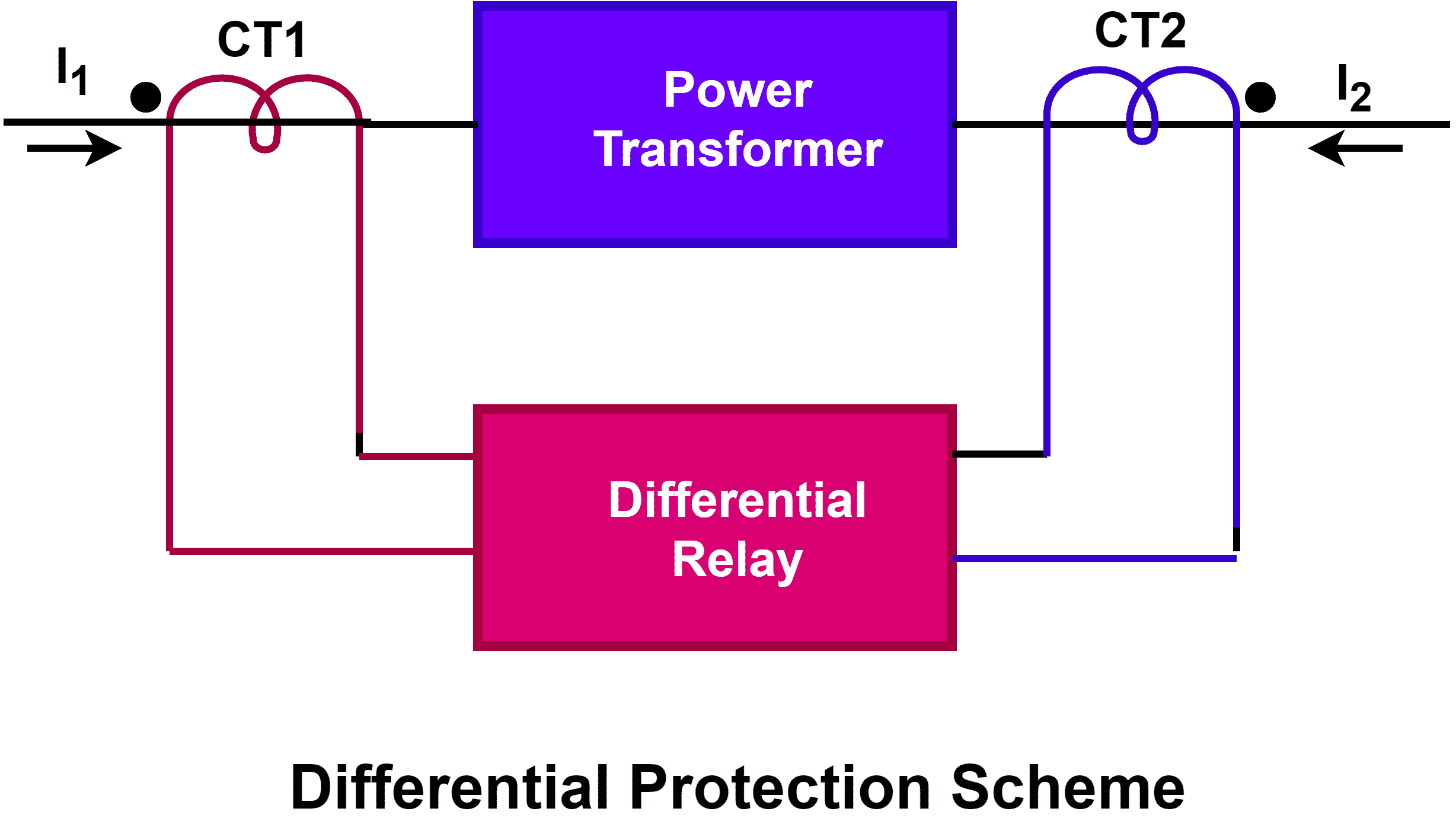What is Differential Protection?
Differential protection is used for detecting the fault in a particular zone. Therefore, we call it also unit or zone protection. The differential protection is widely used in large rating transformers, alternators, motors, and bus bars. The PS class CTs are used for differential protection. The differential protection is also called the zone or unit protection. The metering class CTs should not be used for differential protection.
The incoming current to equipment and outgoing current from equipment is measured and if the difference in the current is found, the differential protection relay operates and the relay trips the incoming breaker to isolate the faulty section.
The important point is that the differential relay should not trip in case of through fault condition. The relay must operate only if the fault is in the equipment. The differential protection scheme is as given below.

Protection class CTs and its limitation in differential protection
The CT1 and CT2 measures the current and the difference of the current flow through the differential protection relay.
Generally, protection class CTs are used for feeder protection. The protection class CTs like 5P10, 5P20, and 10P10, 10P20 are used for sensing the overcurrent and earth fault current at the time of the fault. If we use protection class CTs for differential protection scheme, What will happen? Do protection class CTs provide protection under unit faulty conditions?
Suppose, 5P10 class current transformer is used for differential protection at both sides of the transformer- primary and secondary side. The 5P10 CT functions well if the current through it is 10 times the rated CT current. Beyond 10 times current the CT will saturate. However, it can not be well defined at what current protection class CT will saturate.
The 5P10 installed at the primary side CT may saturate at 11 times rated current, and the 5P10 CT installed at the secondary side of the transformer may saturate at 12 times of CT rated current. This difference in the current cause protection relay to operate under through fault condition. Also, the lead resistance may be different for both CTs, depending upon the distance of the CT to the protection relay. From this discussion, it is clear that protection class CT cannot be used for differential protection.
Why Special Protection Class (PS Class CT) is good fit for differential protection?
The special protection class CTs are used for differential protection. What is the difference between the ‘P’ class and the ‘PS”class CT? The PS class CTs used for differential protection have identical knee point voltage. Under through fault condition, both the CT operates, and thus the differential relay remains inoperative. The designer of the PS class CT asks the user the lead resistance, relay burden, and system fault current before designing the CT.
What is Knee Point Voltage(KPV) of CT?
The knee point voltage (KPV) of the CT depends on the system fault level and CT burden. After taking into account all these parameters protection class CT is designed.
The knee point voltage of the protection class CT is;
KPV = If x (RCT+RL+RR)
RCT+RL+RR = Total Burden on CT
If = Fault Current
Related Posts
- Accuracy Limit Factor of Current Transformer
- Current Transformer – Construction, Phasor and Errors
- Instrument Safety Factor of Current Transformer
- What is meaning of 5P20 in current transformer?
- Current Transformer Secondary Grounding
- Accuracy Class Of Current Transformer
- How to Calculate Knee Point Voltage of Current Transformer?
- How to Calculate Burden of CT